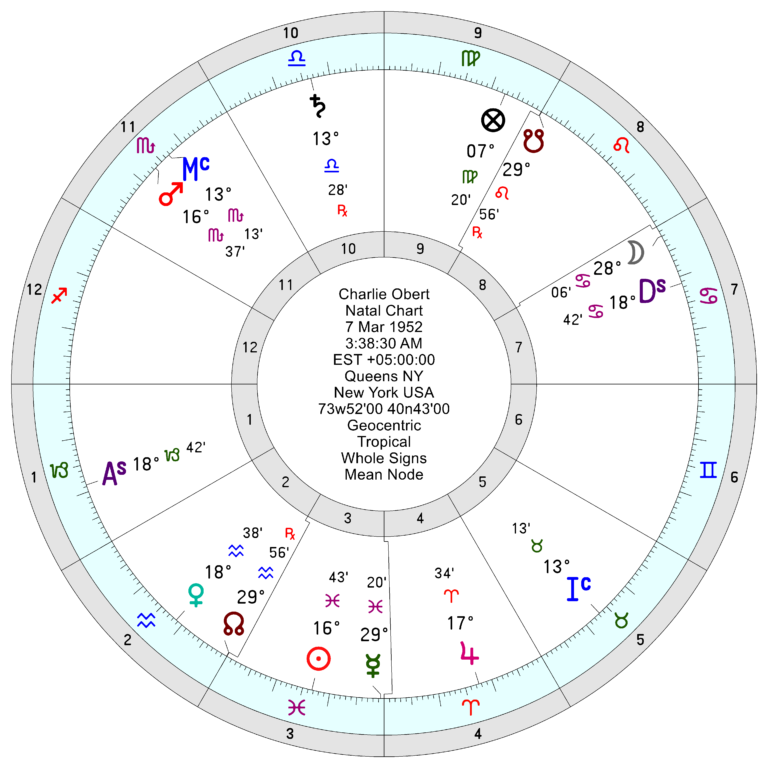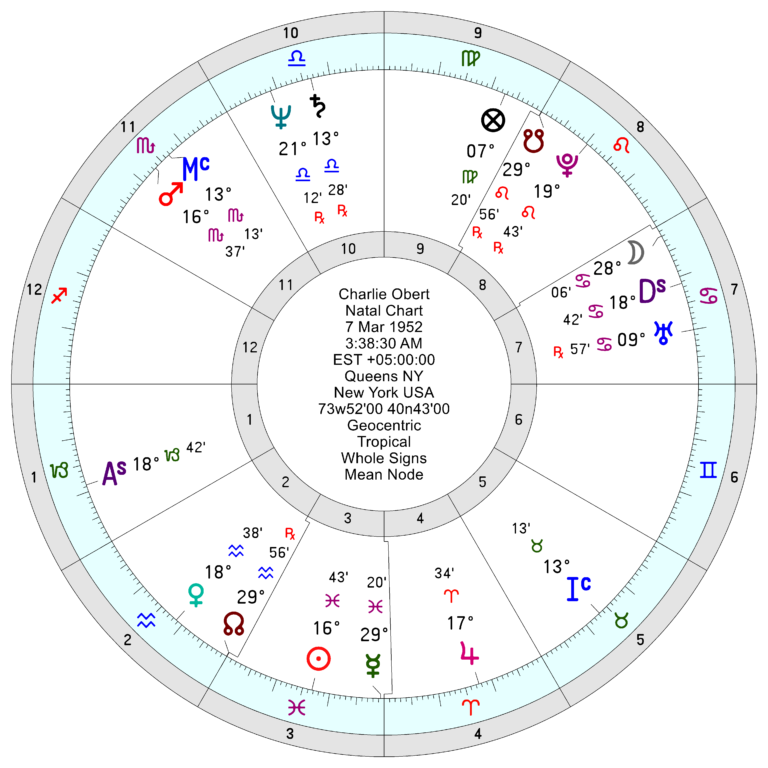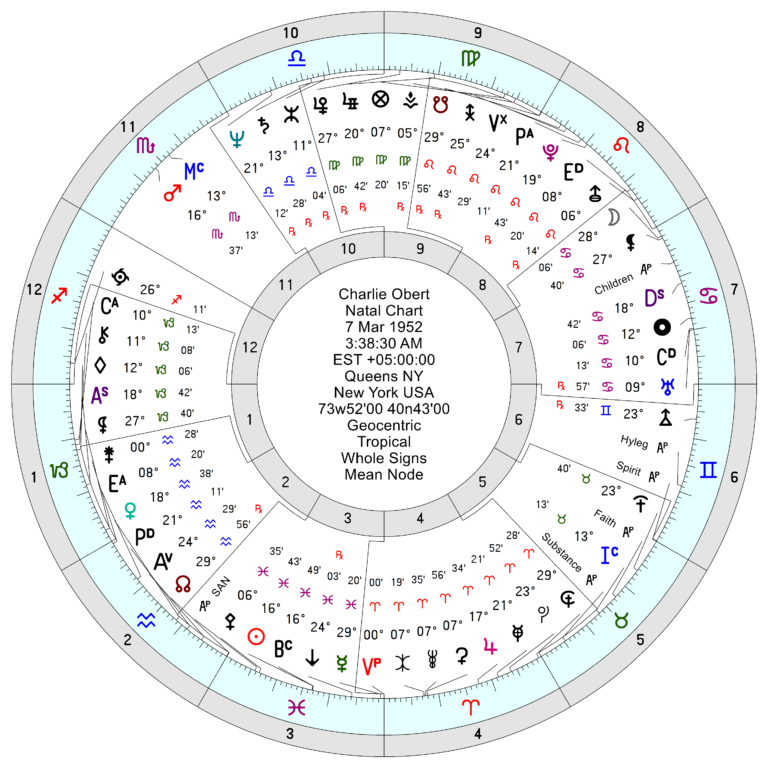In modern astrology as compared to traditional there is a change in the number of planets – you go from the seven in traditional to nine (or ten if you still count Pluto) modern planets. In addition, many modern astrologers also include various asteroids, dwarf planets and other significant points. This is not just a simple adding of a couple of points to a set. Changing the number of points changes how we perceive the whole set, how we work with it. There is a general principle regarding that – the more items you add to a set, the less attention, meaning and complexity you can give to any member of the set. An increase in complexity in one way is balanced by a simplification in another way. I want to use the rest of this essay unpacking this principle and examining its implications in our lives, especially in our astrology.
General Principles
There is a principle I have seen in NLP that they call the Magic Number Seven. When you list items, if the number of items exceeds seven by too much, they cease to be individual items and blur into a group. I am a teacher and trainer by trade, and I have found that class size makes a big difference in how much attention I can pay to each student. The count goes something like this – 4, 5, 6, 7, Many. Right around the number seven there is a break point, a change in the nature of the class, and instead of a number of individuals it becomes a Group – the individual students blur and lose importance. When I did custom classes, customers always wanted to add as many students as they could to the class, thinking they were getting more value for their money. I had a hard time explaining to them that as the number of students goes up, the quality of attention I can pay to each student goes down. Sheer number does not equate to value. When I teach web design I use a similar principle. A main menu of a site should contain up to seven items maximum – past that, and the individual items blur and lose attention. Again, the count is, 5,6,7, Many. Give people a menu of up to seven items and they might look at all of them. Give them a menu of 50 items and they will ignore all but the first handful. A similar thing happens when you go shopping. Say you’re looking for coffee. If you go into the store and there are 4 or 5 different kinds, you might take time to look at each of them. If you see multiple shelves with 50 or 60 brands, that is too much – you will either just grab one of the few at the top, or you will scan through the items looking for some other way to narrow it down – maybe look only for the dark roast, or the decaf, or the Mexican coffee, and so on. Or, you might scan only for a brand name you’re familiar with. You need to narrow down to a group of seven or less before you can start weighing individual items. If you own just one or two books, each book is distinct, personal and important. If you own 10 books or so you have a small group – one or two may stand out, but each book becomes less important. If you own hundreds of books (which I do) they become a faceless mass, a collection – it is very easy to lose track of what you own and what you don’t, and it can be a challenge to track down an individual book. Increase in number leads to a decrease in importance and distinctness of each item. Back when there were still bookstores (sigh… anyone remember that?…) you could go into a bookstore and browse the whole store. As the number of books proliferated and as stores got huger the art of wide browsing got lost, and now with the Internet browsing has been replaced by searching. Browsing and searching are two different strategies for approaching a subject. With online stores you have a much wider selection and you can search – but you really can’t browse anymore.
Astrology and the Number of Planets
We have a similar principle at work with astrology. Traditional astrology uses seven planets, and if you read the old texts the meanings assigned to each of the planets are very rich, complex, and multi-dimensional. Adding the two (or three for awhile there) outer planets made a distinct change – it crossed the line from individuals to Many. With the addition of the outer planets, there was also a simplification, a decrease in the complexity of meaning assigned to each planet. In astrology texts, you start to see that simplification of meanings in the late 1800s, and it becomes more extreme in the 1900s with the development of modern astrology. By the time you get to our modern books the meaning of each planet is simplified to the point of being a bare shell of the previous traditional meanings. The tendency is to want to boil the meaning of each planet down to a keyword, a single core concept. This is worlds removed from traditional astrology. The more items that are added, the less importance and meaning is attached to each item.
Patterns in the Chart
Change the number of planets and you have to come up with new ways of dealing with the changed number. Early in the 20th century Marc Edmund Jones came up with the chart shapes – the splash, the locomotive, the bundle, and so on – and the interesting thing is that they work very well with ten planets, but they really don’t work with only the traditional seven. There are also the modern aspect configurations, like T square or grand cross or mystic rectangle or kite or yod and so on. Each of these is a way of ordering the complexity of the greater number of points by seeing patterns in groups of those points. When you have patterns like that the included planets jump to the foreground and planets outside the pattern recede into the background. Our minds can only focus on a limited number of points at the same time. Here is my chart with only the traditional seven planets.

Now here is the same chart with the modern outer planets (or sort of modern – I am including dwarf planet Pluto).

Even with just 3 more items in the set, you don’t perceive the chart in quite the same way. You change the sorts of patterns you use to make sense of it. Right at this level of complexity, the Jones chart patterns work very well. There is still a small enough number of points that there can be a pattern to the whole. Modern astrologers are fond of reminding me that I am missing a lot by leaving out the three modern outer planets. I can say by experience that they are missing a lot by not focusing only on the traditional seven – and I did not realize how true that was until I seriously studied the traditional texts. Fewer planets, yes, but each planet is much more rich, complex, and important. It’s a trade-off. For those of you who are modern astrologers and have not really studied the traditional texts, I think I can fairly say that you have no idea of how much richness of meaning there is in each of the traditional seven planets. I just recently finished writing my longest book just on the traditional meanings of the planet Saturn – and interestingly, in order to do that right, I needed to spend a fair amount of time in that book talking about the worldview and context within which the richer meanings of Saturn really makes sense. Changing quantity changes quality, and also changes how we perceive overall shape and pattern. A chart with ten planets has a different sort of shape than a chart with seven.
Asteroids – Huge number of points
You get another distinct shift in how you perceive and interpret the chart when you start adding in numerous asteroids and other parts. Here is my natal chart, including the modern planets, the most important asteroids, and the eight points called the Trans-Neptunian Planets or TNP’s that were first used in Uranian astrology.

The previous systems of finding a pattern in the chart break down. The Marc Edmund Jones system of chart shapes breaks down completely – instead of being too few points, there are far too many. With this many points, you have a shapeless mass, and you have to develop a different set of techniques to pull order out of all that complexity. It has to be a set of techniques that can pull a few important points out of the set and focus just on them while letting the majority of points fade into the background. There really is no shape to the chart as a whole anymore. I talked about this difference in the shape of the cosmos in my recent book on Saturn. In traditional astrology, the cosmos is ordered, has shape, boundaries, structure. In modern astrology, the cosmos is an open ended, infinite shapeless mass, where we use techniques to carve order out of the underlying chaos.
Martha Lang-Wescott and Asteroids
I want to look at the work of Martha Lang-Wescott (MLW going forward for simplicity here) as a kind of extreme case. MLW uses many, many asteroids – her earlier books used around 50 and she continued to add more in each book until by now I think she is well over 100 asteroids. To make sense of that, MLW draws techniques from the school of Uranian astrology and makes extensive use of the 90-degree dial, midpoints, and other similar techniques. Her work really is amazing, and the dial techniques are very well worth learning and mastering. The chart as a whole ceases to have meaning as a shape – like I said it is more like a shapeless collection that you can pull points of. There are too many points, and you just can’t look at them all at once. It’s a different kind of complexity – as the number of points proliferates, the complexity of meaning, and the importance, given to each of the points decreases. Also, with that many points, the sense of relative importance of points, of planets over against asteroids, gets lost.
David Cochrane, Harmonic and Vibrational Astrology
You’ll see another kind of extreme complexity of technique in the work of David Cochrane who calls his system Vibrational Astrology, which is essentially a further development of Harmonic Astrology. (I prefer the name Harmonic to Vibrational – Harmonic is a pattern metaphor, and Vibration is a physical matter metaphor.) As part of that increased complexity of the harmonic pattern, Cochrane’s system uses a greatly simplified and streamlined set of meanings that he assigns to each planet. As an example, Cochrane takes all of the multi-dimensional meaning assigned to Saturn and boils it all down to the principle of carving away excess fat. That is part of Saturn, yes, but that streamlining is at the cost of a great loss of complexity in other ways. Adding complexity in one part of a system is balanced by a simplification in another part.
Demetra George and Asteroids
We have another example of points being added with Demetra George’s pioneering work with asteroids. in Demetra’s case, I think the asteroids she focuses on adding a richness of dimension of meaning to women’s experience that was missing in traditional astrology, and in the culture as a whole. This is an example of adding complexity to fill in an absence of richness of meaning in a specific area – in this case, modern women’s experience. Her work is particularly timely for our point in history.
Loss of Ranking or relative Importance
With the proliferation of points, there is also a loss of ranking, a loss of a sense of relative importance. I have seen more than a few astrology chart interpretations where a minor asteroid is given as much weight in the final meaning as any of the traditional planets. With the greater number of points, you are more likely to pick and choose the asteroid(s) focused on the particular issue you are interested in. That point becomes the most important, and the rest of the chart fades into the background – we can only focus on so many things at once Astrologers who use asteroids will claim that it adds a lot of meaning to their art – yes it does, but that is balanced by a loss of complexity of meaning elsewhere. With large numbers of points, the kinds of patterns we use have to change. For instance, a grand cross configuration has a lot less meaning when you can pick out 2, 3, or 4 of them in every chart you look at. The specialness, the unique meanings of those configurations get lost.
My Own Choice of Traditional
Given this issue, this is how I choose to do astrology. In my own work, I find the greatest meaning in traditional astrology using only the classical seven planets. Adding extra points does not add enough extra meaning to compensate for the lost clarity, focus, richness, and depth. It really is true that I get more meaning out of a chart when I leave out Uranus and Neptune (and kid brother Pluto) than if I include them. If you are a modern astrologer I would encourage you to try limiting yourself to the traditional seven planets for awhile as a learning experience. Having that few a number of points to focus on forces you to go much more deeply into the complexity of the meaning of each of the points. At that point, it is worth looking into traditional texts to recover some of the old meanings. If you have a hard time understanding how I could leave out such important objects as the modern planets, I can assure you that part of me has a hard time understanding why you want to keep using them. Modern and traditional astrology are complex in different ways. Traditional astrology has a steeper initial learning curve and there is more time needed to master the complexity, but you end up with a powerful and flexible toolkit where each of the items has multiple dimensions. Modern astrology is normally taught by giving each planet a simple group of keywords, which is much, much different from the traditional lists and catalogs of traditional texts. Once you have that simple base, usually complexity is added by adding more points and by adding more kinds of aspects. The complexity is in number rather than depth, and for me, it is a loss. This is related to a difference in how aspects are conceived in traditional and modern astrology. In traditional, with a limited number of planets and aspects, you can have a lack of aspect between points. This is called aversion, and it has a profound meaning in traditional. The lack of aspect itself has meaning. Modern astrologers are much more likely to say that EVERY two points have SOME kind of aspect between them, even if we have to find some new kind of minor aspect. Yes, there is a gain in the complexity of meaning there, but at the same time, the concept of aversion and of planets being out of aspect is completely lost. Again, we see that the addition of complexity in one area is balanced by a loss of meaning in another.
In Closing
I don’t want to draw any neat and final conclusions here – this essay is largely my thinking out loud, as I have never clearly seen these issues before now. I also most definitely do not claim that only one of these approaches that I have talked about is valid. I am immersed in the traditional art of great teachers like William Lilly, but at the same time, I can admire the dazzling virtuosity of asteroid astrologers like Martha Lang-Wescott. I do think it is worth taking time to think about how this issue of the number of points affects how we perceive and interpret charts. Again, to reiterate, it is not a simple addition. The addition of quantity or complexity leads to a loss or simplification elsewhere.



